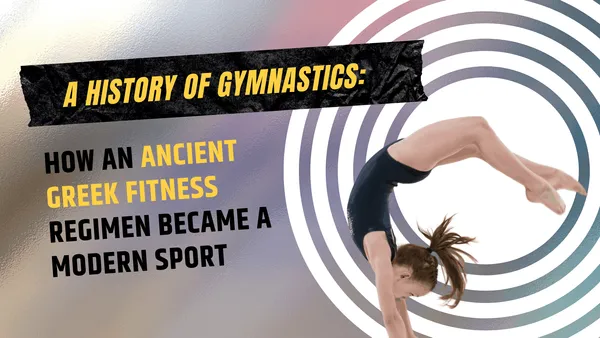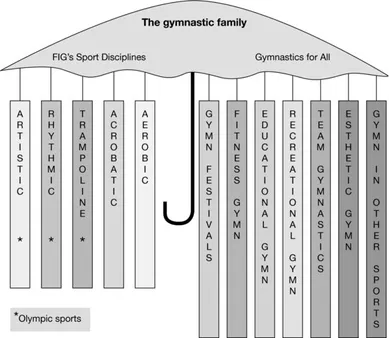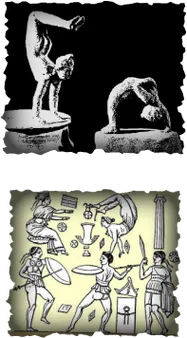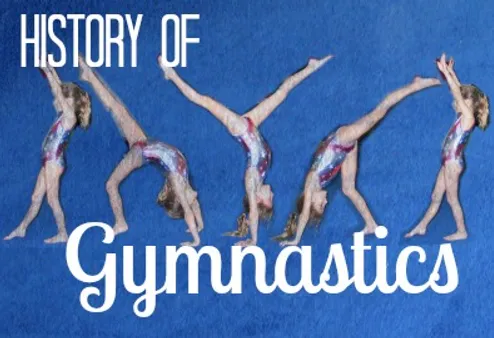Table of Contents
Welcome to Kizworld, your ultimate source for exploring the captivating world of gymnastics. From its ancient origins in Greece to its modern-day status as a global phenomenon, The history and evolution of gymnastics is a journey through time, showcasing human ingenuity and the pursuit of physical excellence. Join us as we delve into the rich tapestry of this sport, uncovering the key moments and inspiring figures that have shaped its legacy. Discover how gymnastics has transformed from a form of physical training to a globally recognized sport, captivating audiences with its displays of strength, agility, and grace.
The History and Evolution of Gymnastics: A Journey of Strength, Grace, and Athleticism
I. From Ancient Origins to Modern Discipline: Tracing the Fascinating Journey of Gymnastics
From Ancient Origins to Modern Discipline: Tracing the Fascinating Journey of Gymnastics
The captivating world of gymnastics has its roots in the ancient art form of physical training. In gymnasion, the Greek word meaning "place of exercise," the foundation for gymnastics was established emphasizing strength, agility, and balance. Over the centuries, from ancient civilizations through medieval times, gymnastics evolved from recreational festivities to a more structured discipline foundational to the modern sport we know today. Visit our site How to do a handstand. to watch a video tutorial and learn more about handstand.
Gymnastics, widely recognized as a global sport, has showcased extraordinary feats of human strength, coordination, and artistry on the world stage. From the first modern Olympic Games inspired by the ancient competition to the awe-inspiring performances of legendary gymnasts, the history of gymnastics is replete with captivating stories of triumph, determination, and the embodiment of the Olympic ideals. Delve into our related post The benefits of gymnastics for kids to know the wonderful benefits of gymnastics for kids.
Region | Notable forms of gymnastics |
Greece | Aesthetic and recreational activities, emphasis on physical development |
China | Martial arts, acrobatics, balancing exercises |
India | Yoga, flexibility training, strength exercises |
The 19th century served as a pivotal moment for gymnastics. Inspired by the vision of German educator Friedrich Ludwig Jahn and others, the concept of organized gymnastics clubs and formalized training regimes gained momentum across Europe and beyond. The Turnbewegung, a movement advocating for physical fitness through gymnastics, spread throughout Germany and Austria and became the cornerstone for the development of a plethora of gymnastics organizations around the world. Learn more about the 19th century gymnastics evolution by visiting our article Best gymnastics equipment for home use.
As the 20th century unfolded, gymnastics reached new levels of sophistication and artistry. The FIG (Fédération Internationale de Gymnastique) emerged as the governing body for international gymnastics, establishing standardized rules and regulations for competitions. Moreover, the 1936 Berlin Olympic Games marked a significant turning point, where gymnastics became a staple event, captivating audiences with breathtaking performances. Visit our article How to improve your flexibility and mobility with gymnastics to find out some great tips to improve your flexibility and mobility.
Since then, gymnastics has witnessed a continuous ascent in popularity, attracting athletes from all corners of the globe. As a beacon of athletic prowess, it has become an integral part of the Olympic Games and is regularly featured in major international competitions. The gymnastics journey, spanning millennia, continues to be a dynamic tale of human potential, determination, and the relentless pursuit of excellence, inspiring generations to embrace the transformative power of physical fitness. Be sure to read our article How to choose the right gymnastics leotard to learn all the skills and choose a suitable leotard for yourself.
II. From Rituals to Recreation: The Multifaceted Role of Gymnastics in Human History
From Rituals to Recreation: The Multifaceted Role of Gymnastics in Human History
The Dawn of Gymnastics
- Ancient origins of gymnastics: Tracing its roots to ancient civilizations like Egypt, Greece, and China.
- Ritualistic beginnings: Gymnastics as a component of religious ceremonies and celebrations.
Gymnastics in Ancient Greece
- The palestra: A central hub for athletic training, including gymnastics.
- The Olympic Games: Gymnastics as a prominent discipline, showcasing strength, agility, and grace.
Renaissance and Enlightenment: A Revival of Interest
- Renewed fascination with classical ideals, leading to a resurgence of gymnastics.
- Gymnastics as a tool for physical education and military training.
The Modern Era: Transformation and Expansion
- The 19th century: Standardization of gymnastics techniques and the emergence of competitive events.
- The 20th century: Gymnastics gains global recognition as an Olympic sport.
Gymnastics Today: A Global Phenomenon
- Gymnastics as a widely practiced sport, enjoyed by people of all ages and abilities.
- A symbol of athleticism, discipline, and perseverance.
Conclusion
From its ancient origins to its modern-day status as a global phenomenon, gymnastics has evolved tremendously. Its journey reflects human ingenuity, resilience, and the pursuit of physical excellence. Today, gymnastics continues to captivate audiences worldwide, inspiring awe and admiration for the incredible feats achieved by its dedicated athletes.
III. A Saga of Strength, Grace, and Innovation: The Evolution of Gymnastics Techniques and Equipment
A Saga of Strength, Grace, and Innovation: The Evolution of Gymnastics Techniques and Equipment
The history of gymnastics is a testament to human ingenuity and the pursuit of physical excellence. From its ancient origins in Greece to its modern-day status as a global phenomenon, the evolution of gymnastics techniques and equipment has been a fascinating journey of innovation, perseverance, and triumph.
In the early days of gymnastics, athletes relied on simple equipment and rudimentary techniques. They performed basic exercises such as handstands, cartwheels, and somersaults on mats made of straw or sawdust. As the sport evolved, so did the equipment and techniques used by gymnasts. New apparatus such as the uneven bars, balance beam, and vault were introduced, and gymnasts began to develop more complex and daring routines.
One of the most significant developments in the history of gymnastics was the invention of the springboard in the 19th century. This device allowed gymnasts to generate more power and height in their jumps, which led to the development of new and more difficult skills. The springboard also made it possible for gymnasts to perform more complex routines, which increased the excitement and spectacle of the sport.
- The uneven bars were introduced in the 1880s.
- The balance beam was introduced in the 1930s.
- The vault was introduced in the 1950s.
In the 20th century, gymnastics continued to evolve at a rapid pace. New training methods and techniques were developed, and gymnasts began to push the limits of human ability. The sport also became more popular and accessible to people around the world, thanks in part to the advent of television and the internet.
Name | Nationality | Major Accomplishments |
Simone Biles | United States | Most decorated gymnast in history, with 32 Olympic and World Championship medals |
Vitaly Scherbo | Belarus | Only gymnast to win six gold medals at a single Olympic Games |
Nadia Comaneci | Romania | First gymnast to score a perfect 10.0 at the Olympic Games |
Today, gymnastics is a global phenomenon with millions of participants and fans around the world. The sport is governed by the International Gymnastics Federation (FIG), which sets the rules and regulations for competitions. Gymnastics is also included in the Olympic Games, where it is one of the most popular and watched sports.
The evolution of gymnastics techniques and equipment has been a fascinating journey of innovation, perseverance, and triumph. The sport has come a long way since its humble beginnings in ancient Greece, and it continues to evolve and grow in popularity today.
If you are interested in learning more about the history of gymnastics, there are many resources available online and in libraries. You can also find many videos of gymnastics competitions and routines on YouTube and other video-sharing websites.
Whether you are a fan of gymnastics or simply curious about its history, there is something for everyone to enjoy in this captivating sport.
Here are some related posts that you may find interesting:
IV. Gymnastics Takes Center Stage: The Rise of Competitive Gymnastics and its Global Impact
Gymnastics Takes Center Stage: The Rise of Competitive Gymnastics and its Global Impact
The early 20th century marked a pivotal moment in the history of gymnastics, as the sport transitioned from a predominantly European pastime to a global phenomenon. This transformation was largely driven by the rise of competitive gymnastics and its subsequent inclusion in the Olympic Games.
In 1900, gymnastics was officially added to the Olympic program at the Summer Games in Paris, France. This milestone event marked the beginning of a new era for the sport, as it gained international recognition and began to attract athletes from all corners of the globe. The inclusion of gymnastics in the Olympics also helped to standardize the rules and regulations of the sport, which further contributed to its global appeal.
Year | Location | Number of Participating Countries |
|---|---|---|
1896 | Athens, Greece | 14 |
1900 | Paris, France | 28 |
1924 | Paris, France | 36 |
1928 | Amsterdam, Netherlands | 48 |
1932 | Los Angeles, United States | 31 |
As the popularity of competitive gymnastics grew, so did the demand for specialized training facilities and qualified coaches. This led to the establishment of gymnastics clubs and academies around the world, providing opportunities for aspiring athletes to develop their skills and pursue their Olympic dreams.
The inclusion of gymnastics in the Olympics had a significant impact on the sport's global reach and popularity. By providing a platform for athletes from different countries to compete against each other, the Olympics helped to foster a spirit of camaraderie and sportsmanship among gymnasts worldwide.
- The rise of competitive gymnastics also led to the development of new techniques and skills, as athletes pushed the limits of human performance in their quest for Olympic glory.
- These innovations not only enhanced the spectacle of the sport but also helped to advance the overall level of gymnastics worldwide.
Today, gymnastics is one of the most popular and widely practiced sports in the world. It is enjoyed by people of all ages and abilities, and it continues to inspire and amaze audiences with its artistry, athleticism, and grace.
Check out our other related articles on gymnastics:
- How to Do a Handstand: Step-by-Step Guide
- The Benefits of Gymnastics for Kids: Physical, Mental, and Social Development
- The Best Gymnastics Equipment for Home Use: Essential Items for Training
V. Conclusion
Gymnastics has come a long way since its humble beginnings in ancient Greece. Today, it is a globally recognized sport with millions of participants and fans worldwide. The history and evolution of gymnastics is a testament to the human spirit's ability to push the limits of physical achievement and artistic expression. From the ancient Olympics to the modern-day World Championships, gymnasts have captivated audiences with their incredible strength, agility, and grace. As the sport continues to evolve, we can look forward to even more amazing feats of athleticism and artistry in the years to come.